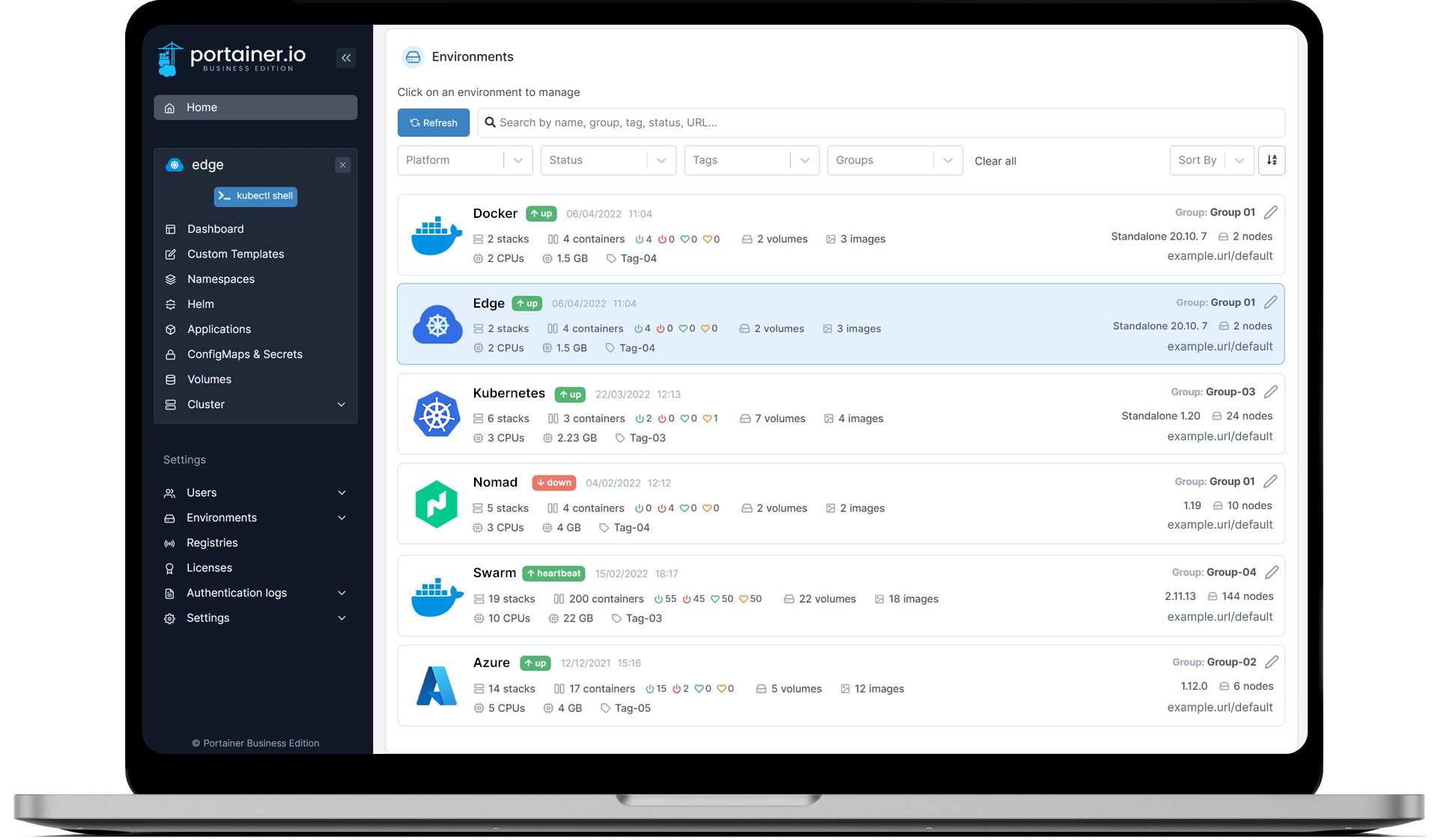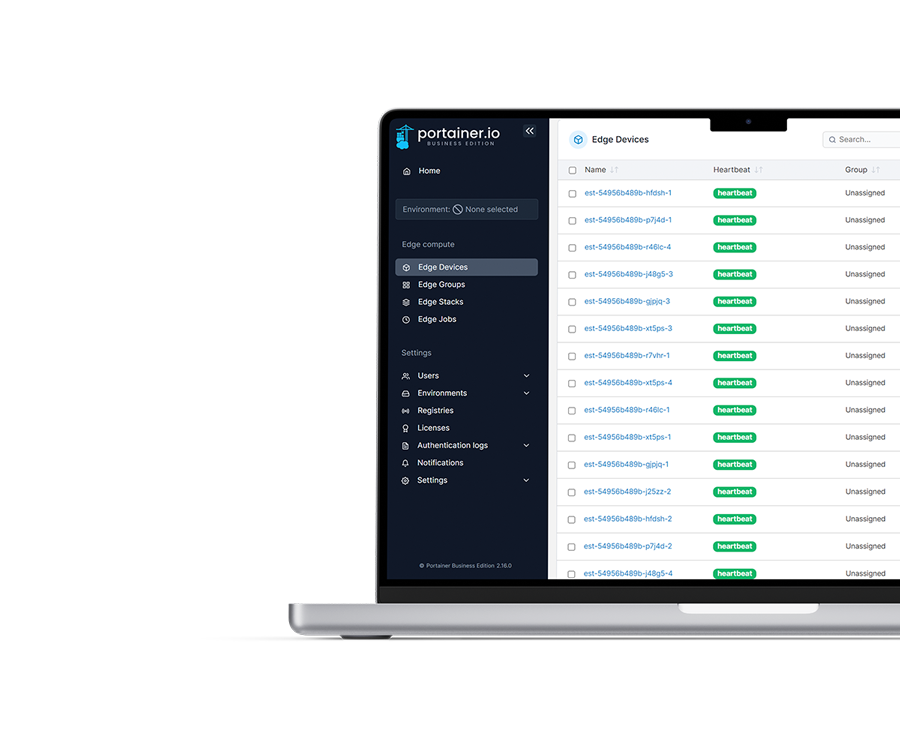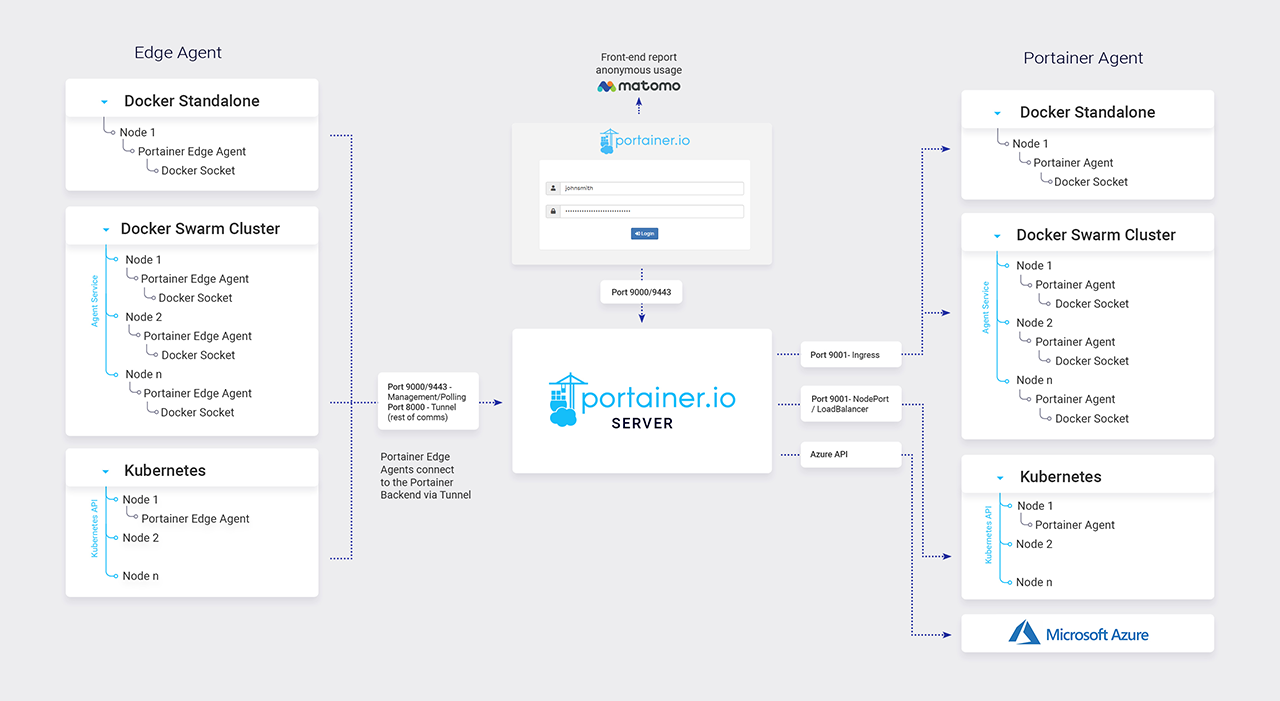Several architectures for large-scale IoT edge container cluster management - 3-Portainer
This article was last updated on: February 7, 2024 pm
Review above
- Introduction to several architectures for large-scale IoT edge container cluster management - 0-edge containers and architectures
- Several architectures for large-scale IoT edge container cluster management - 1-Rancher+K3s
- Several architectures for large-scale IoT edge container cluster management - 2-HashiCorp solution Nomad
- Several architectures for large-scale IoT edge container cluster management - 3-Portainer
📚️Reference:
IoT Edge Computing series
Portainer + Docker
Brief introduction
Portainer: Powerful container management software to deploy, configure, troubleshoot, and secure containers for Kubernetes, Docker, Swarm, and Nomad in minutes on any data center, cloud, network edge, or IoT device.

- Save time by rapidly deploying applications and centralizing container management
- Reduce risk by quickly managing and securing clusters
- Use reasonable defaults to minimize complexity and keep your team on the right track
- Portainer gives you hybrid and multicloud, multi-cluster, multi-device, container management
There are dedicated solutions and capabilities for containers at the edge – unleash the power of containers at the edge and manage Docker and Kubernetes at the edge in a simple and secure way.

Portainer provides edge-specific capabilities to support Industrial Internet of Things (IIoT) and IoT use cases as well as container management and device management in regional data centers (at the edge of the network).
Portainer is a toolset that allows you to centrally manage thousands of remote container hosts from a single self-hosted instance of Portainer.
It’s worth mentioning that Portainer doesn’t cause vendor lock-in at deployment time because runtime and orchestrator agnostic at the edge — Docker, Swarm, Kubernetes, and Nomad are supported.
Reference architecture

Program advantages
- Designed for containers: Such as support for FIDO features and Intel AMT. One-click onboarding to integrate a large number of new edge devices into your existing IT infrastructure using simple scripts or FIDO device onboard.
- efficiency: Easily deploy and update applications at scale using edge device groups.
- Reduce the level of employee skill required for edge projects: Portainer’s well-designed UI enables non-IT experts to complete expert tasks in day-to-day business. Portainer is also for operations engineers to successfully manage container-based application deployments in the industry.
- Lightweight: Deploy Portainer’s lightweight edge agent directly and run on edge devices with minimal hardware resources (approximately 10 MB of RAM).
- Asynchronous agent mode: Achieve edge autonomy from fluctuating cloud/edge/device unstable networks.
- safe: mTLS for edge agent communication
- Bulk edge device onboarding
Scheme disadvantages
- The open-source version has limited functionality: The open source version has many restricted features, such as: identity and access management, external authentication, RBAC, quota management, security governance, observability, cost management, disaster recovery… It is more deadly. Not available for large-scale, enterprise-level use.
Keep reading
- Several architectures for large-scale IoT edge container cluster management - 4-Kubeedge
- Several architectures for large-scale IoT edge container cluster management - 5 - Summary
